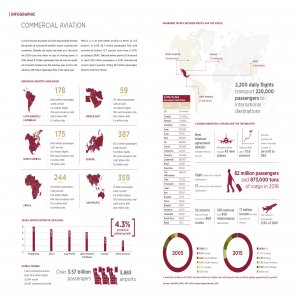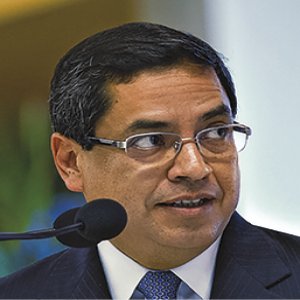Chihuahua Looks to Develop Supply Chain, Boost Capabilities

Chihuahua Looks to Develop Supply Chain, Boost Capabilities

STORY INLINE POST
Q: What is the Chihuahua government’s strategy for the aerospace sector?
OS: The state entered the sector by manufacturing harnesses but since then it has incorporated the production of aerostructures and complex machining, such as that performed by Honeywell. The government has a clear strategy for the industry that includes attracting companies that manufacture structural components and we want to bring more Tier 1 and 2 companies for engines, including companies involved in additive manufacturing.
We are talking with companies such as GE, Boeing, Airbus and Rolls-Royce to discern their requirements in Mexico and once these needs are identified we will focus on bringing more Tier 1 and 2 suppliers. We are targeting companies that perform special heat treatments because incorporating these services will allow the state to attract even more major companies. Chihuahua also wants to develop its capabilities for design and support services. Our priorities are to introduce additive manufacturing capabilities and to strengthen the supply chain while establishing more SMEs and providing further training. Within the Ministry of Innovation and Economic Development we have three training centers dedicated to talent development for the aerospace sector: the Support Institute for Technological Development (INADET), the Innovation and Competitiveness Institute (IIC) and the Chihuahua Work Training Institute (ICATECH).
Q: How are infrastructure projects impacting Chihuahua’s relationship with the US and the state’s efforts to attract investment?
JC: For the last 10 years, the ministry has been highly involved in developing the infrastructure adjacent to the US border to attract more manufacturers to Mexico. An agreement with Union Pacific permitted the establishment of a US$500 million intermodal ramp to Santa Teresa, New Mexico, close to the city’s airport and international park. This ramp is 11.5 miles long and almost two miles wide. During the past seven years, the impact of this ramp on imports and exports has been enormous. While the government of Santa Teresa has invested strongly in this ramp, the Mexican side in San Jeronimo has not developed as well, but this is starting to change.
The region also requires a railroad to connect both countries. Our goal is to connect the railroad that crosses downtown Juarez to the US, 5-6km south of Santa Teresa. This project is expected to be finalized within the next four to five years and will allow a 24-hour connection that will raise the efficiency and capabilities of local companies. We are meeting with US railway operators Union Pacific and Burlington Northern Santa Fe (BNSF) and with Mexico’s Ferromex to sign a memorandum of understanding and obtain a presidential permit. A common concern for long-term infrastructure projects is a lack of continuity after the 2018 Mexican presidential election but the presidential permit can ensure the project continues.
OS: Chihuahua has an old and strong relationship with the US and we have several important projects along the border, including the intermodal ramp to Santa Teresa. We also have launched several promotional campaigns that showcase the strong bonds between us.
Q: What can the local manufacturing sector expect from the renegotiation of NAFTA?
OS: : The ministry has done a number of analyses. A worst-case scenario imagines the cancellation of NAFTA but even under these circumstances the results would not be as bad as many expect them to be. If NAFTA were to be canceled, Mexican exports to the US would be levied a 4 percent tax with the exception of pickups, which would be taxed at 25 percent. However, we now know that NAFTA will not be canceled but renegotiated, which might be beneficial for Mexico. It is often said that there is a trade deficit between Mexico and the US. We expect that the renegotiation of NAFTA will allow the US government to fully understand the relationship between both countries’ manufacturing sectors and how they complement each other.
When NAFTA was designed, some important provisions were not considered, such as those related to SMEs, a key issue that should be addressed in the renegotiation. This topic is a priority. Mexico has neglected SMEs but the country now recognizes their importance to the economy and the general population.
JC: Chihuahua’s manufacturing sector was created long before NAFTA. Even the worse-case scenario is not too black because the state’s industry is well-established and has had a close relationship with its US counterpart even before this agreement was put in place. The renegotiation of NAFTA is a good opportunity that will allow the three participating countries to establish a better regulatory system that benefits all members.
Q: What initiatives is the ministry launching to support SMEs?
OS: Unfortunately, for the past few years the government has neglected to gather the necessary data. Thus, the first step is to collect information regarding SMEs in the state. We are building a database that will allow us to understand how the local supply chain is integrated into each specific sector. For example, we are gathering local SMEs in groups and clusters. In July 2017, we supported two new clusters that integrated SMEs. The first is the Advanced Manufacturing Cluster, which incorporates new technologies, including artificial intelligence, and the second is Global Emerging Companies, which integrates SMEs that support manufacturing. Most of these companies were working by themselves without any major strategy so we are bringing them closer together. One of the challenges Chihuahua faces is the “mortality” of SMEs, a problem that we are trying to reduce.
We are also looking to create more opportunities for these companies. Of all the aerospace companies manufacturing in the state, only 3.6 percent are SMEs. There is a significant opportunity to create more SMEs here and to do so we are working with major aerospace companies to identify gaps in their supply chains that can be addressed by local SMEs. The program Chihuahua Innova aims to generate a community of almost 500 entrepreneurs who will be trained in management. We are coordinating funding with the federal government to establish SMEs and to bring more FDI into the state that can be directed at SMEs.
Q: What are the ministry’s priorities for the aerospace sector?
OS: One of our priorities is to attract more funding so we can begin the construction of the Aerospace Design Center in Chihuahua. This is a joint initiative with Chihuahua’s IPN campus and the private sector, supported by the state government. We expect to acquire the necessary funding before the end of 2017 and to begin construction in the first months of 2018. The second priority is to continue working with SMEs to consolidate the supply chain. We will also continue investing in CENALTEC Chihuahua, a training institution oriented toward the aerospace sector. Our third priority is to offer better training programs and ensure that they add value for the existing industry and to new companies entering the state. We are already contacting companies interested in coming to Chihuahua and are trying to discern the kind of employees they will need to operate locally.
























